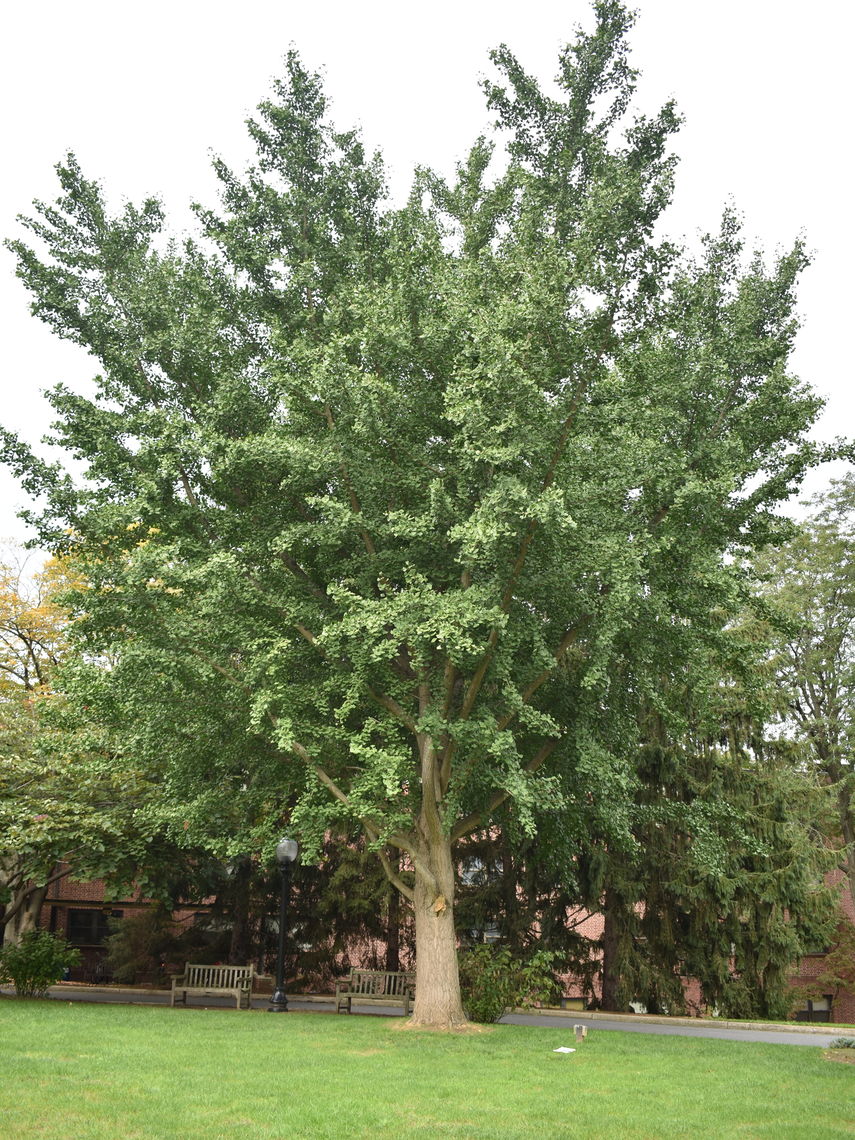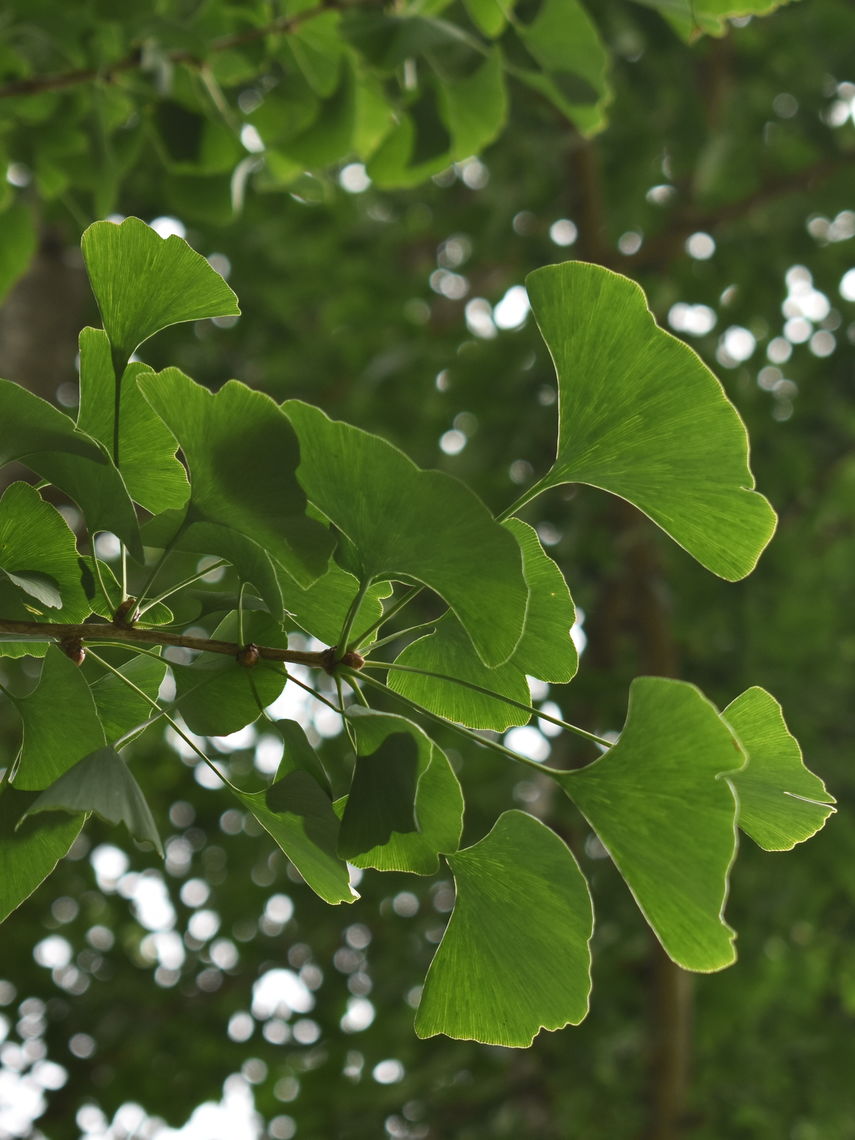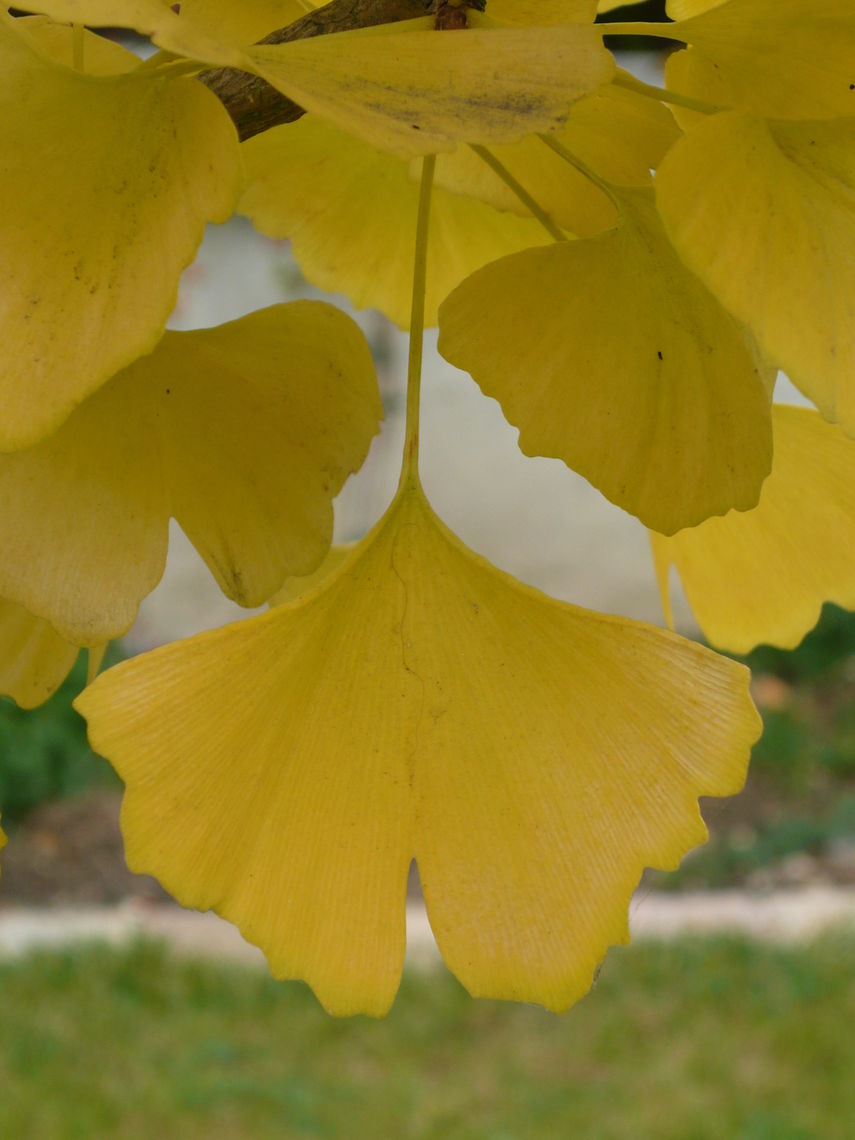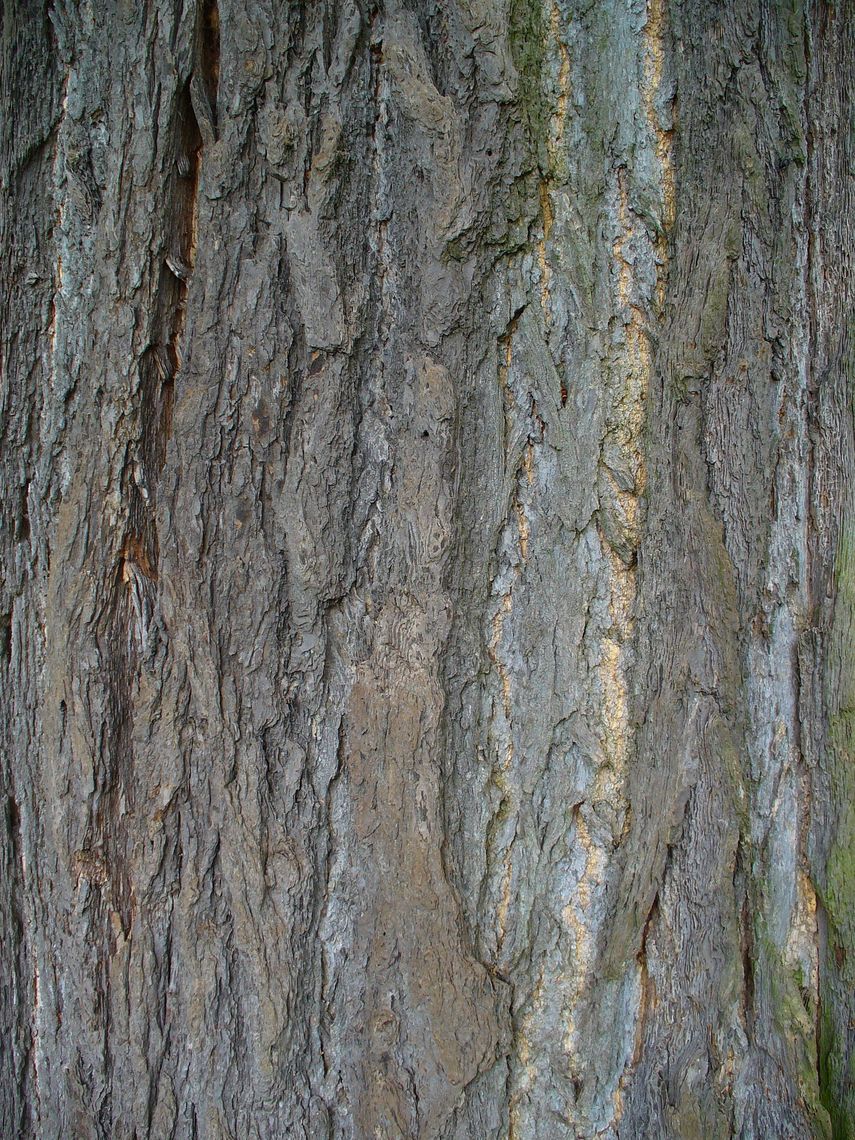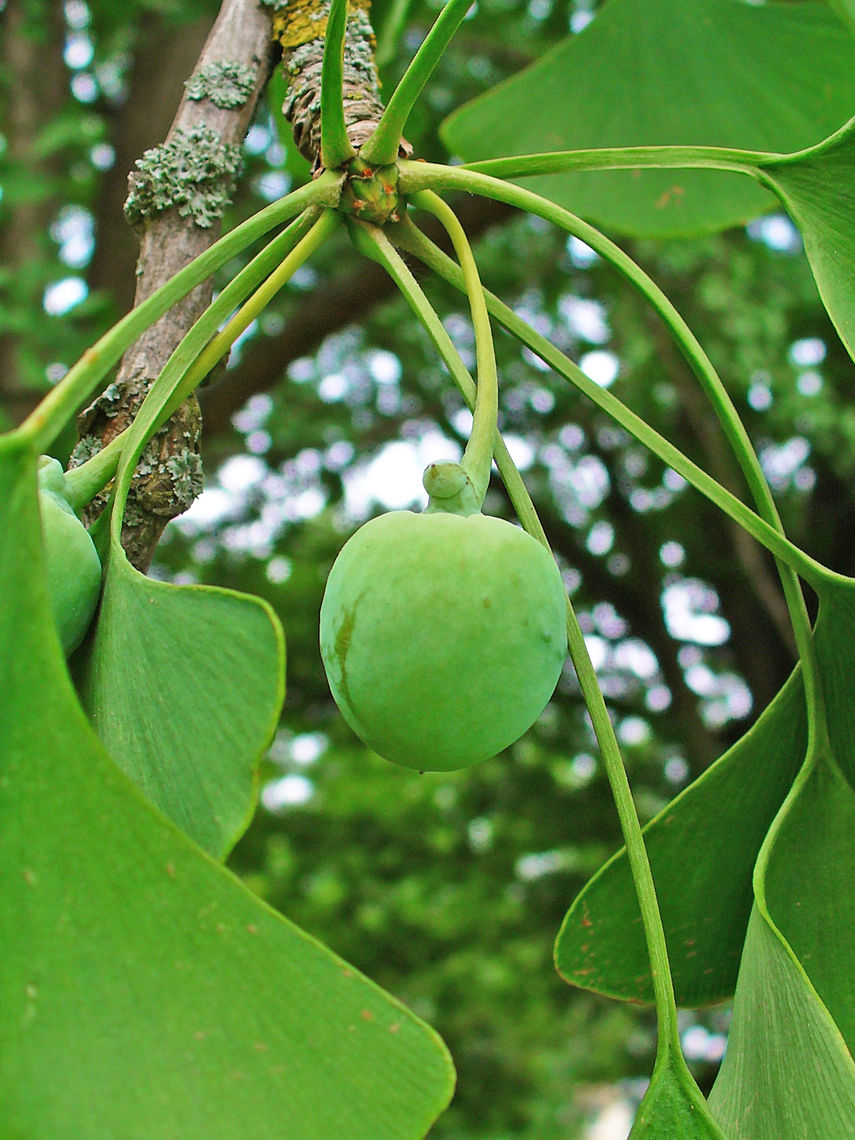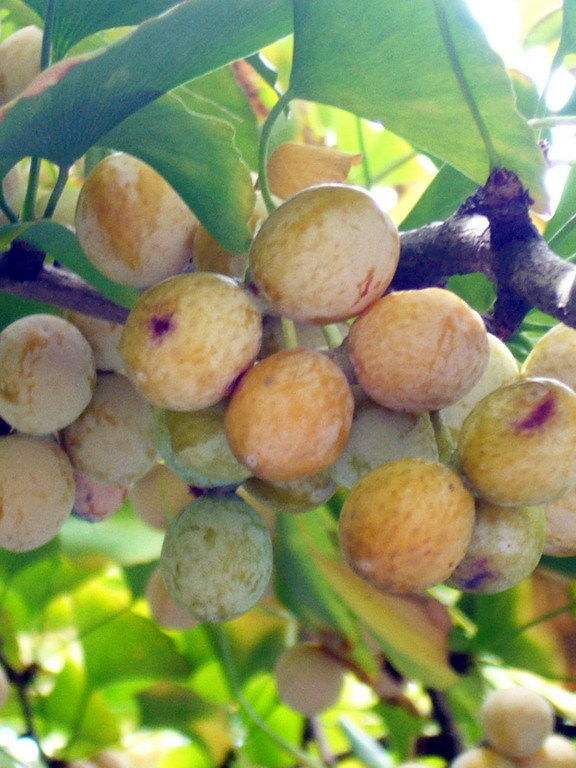Ginkgo (Ginkgo biloba)
The Ginkgo is the only surviving tree from the group of ancient plants that were believed to have inhabited the earth 150 million years ago. Throughout all this time, the tree has remained unchanged. This tree is easily recognizable by its unique, fan-shaped leaves. Ginko trees are sometimes also called maidenhair trees, referring to the hair-like appearance of the leaves, especially in the fall when they turn bright yellow.
Family: Ginkgoaceae (Ginkgo)
Characteristics: The 2-inch to 3-inch-long leaves are wide, fan shaped, and dark green. In the fall, leaves turn brilliant yellow. Flowers will emerge around 20 years after the tree has been planted but are usually not noticable. Bark is light gray with shallow ridges and furrows. With age, this tree becomes dense and broad. It grows 50-80 feet high and has variable spread.
Foliage: Deciduous (leaves lost seasonally)
Geographic Origin: China (non-native)
Cultivation Notes: Requires low maintenance. Does best in full sun. Prefers moist, sandy, and well-drained soils, though is tolerant to a wide range of soil conditions. This tree is also tolerant of saline conditions, air pollution, and heat. If this tree is faced with a hard freeze, all its leaves may fall off. Male trees are usually preferred, since female trees produce messy and unpleasant smelling seeds.
Number on Campus: 2
Sources: Dirr, Morton Arboretum, Missouri Botanical Garden

